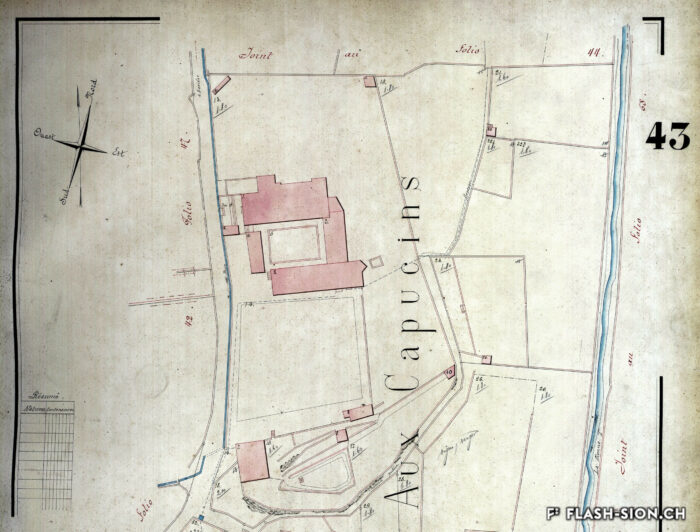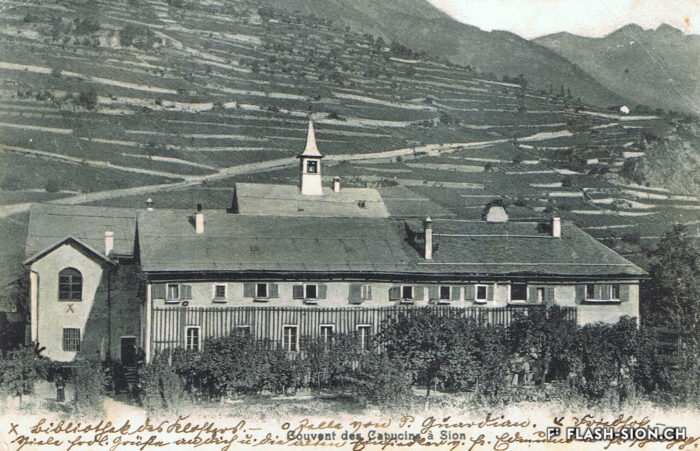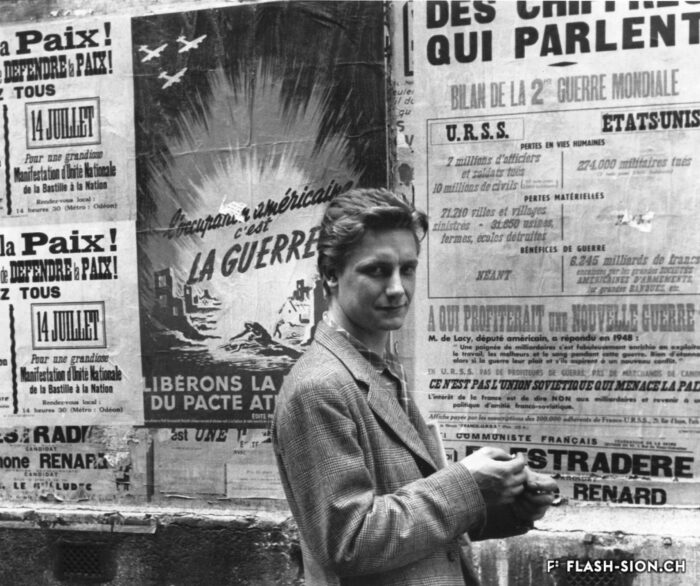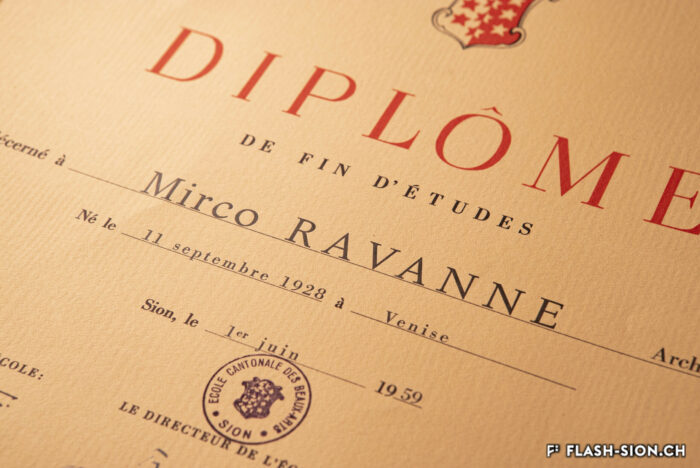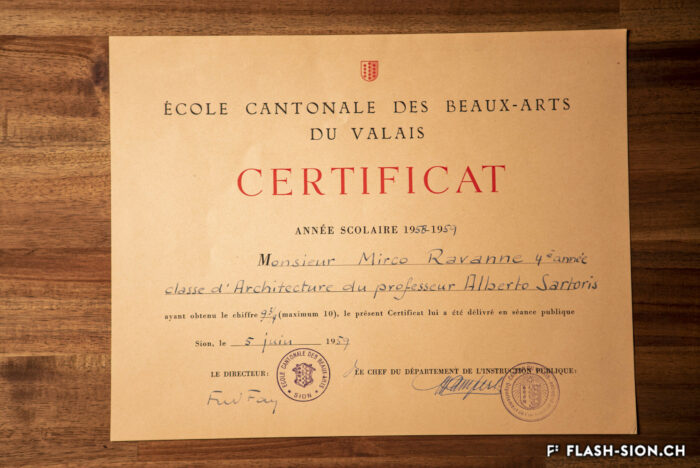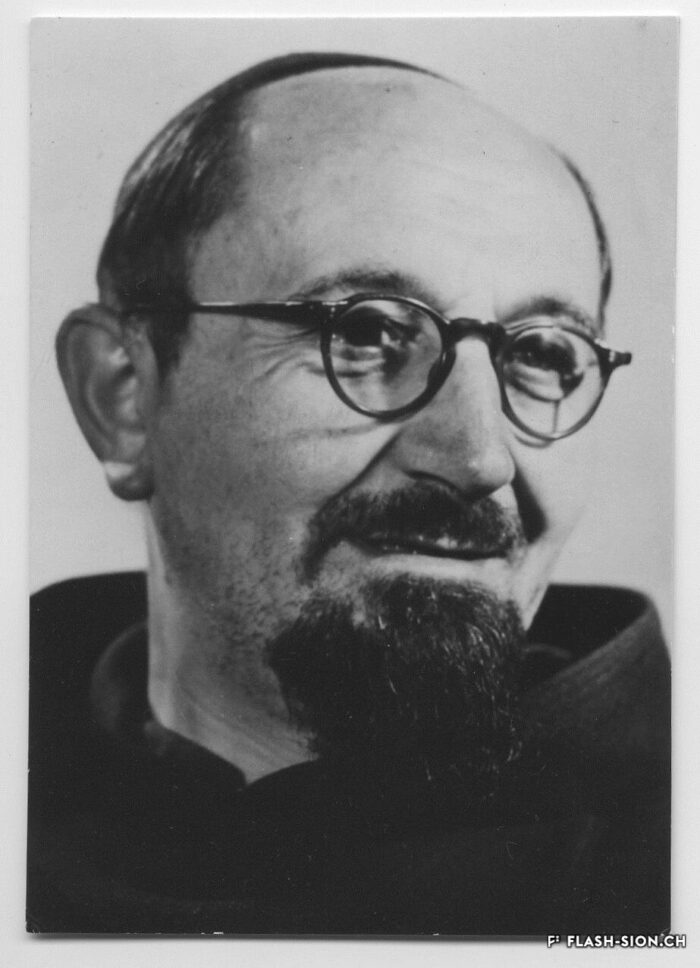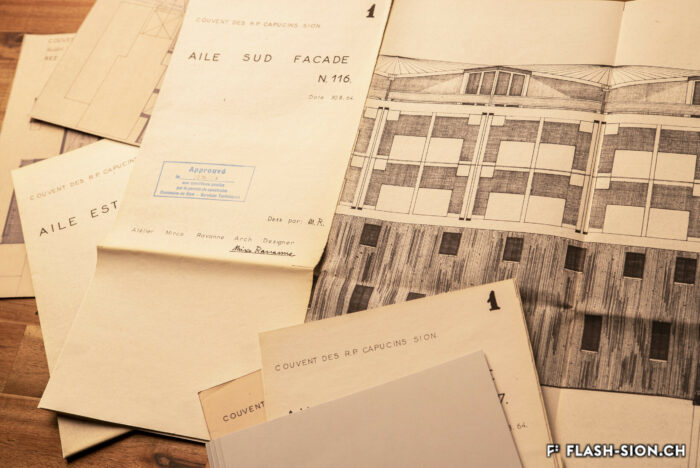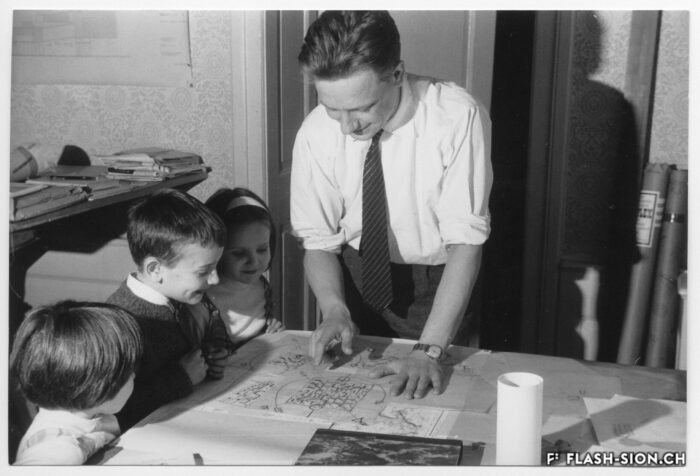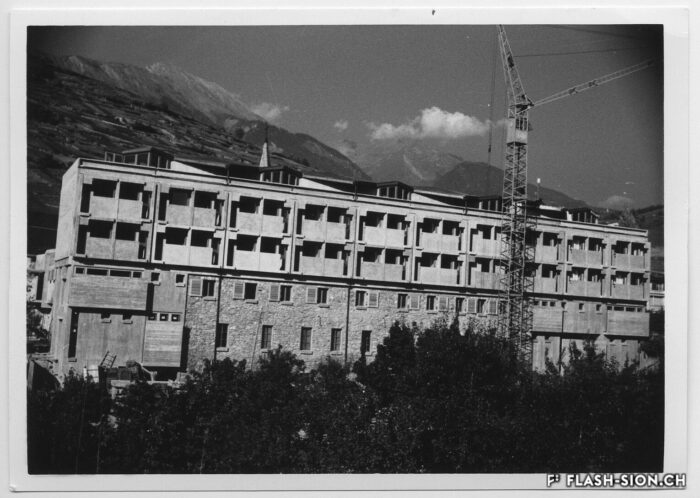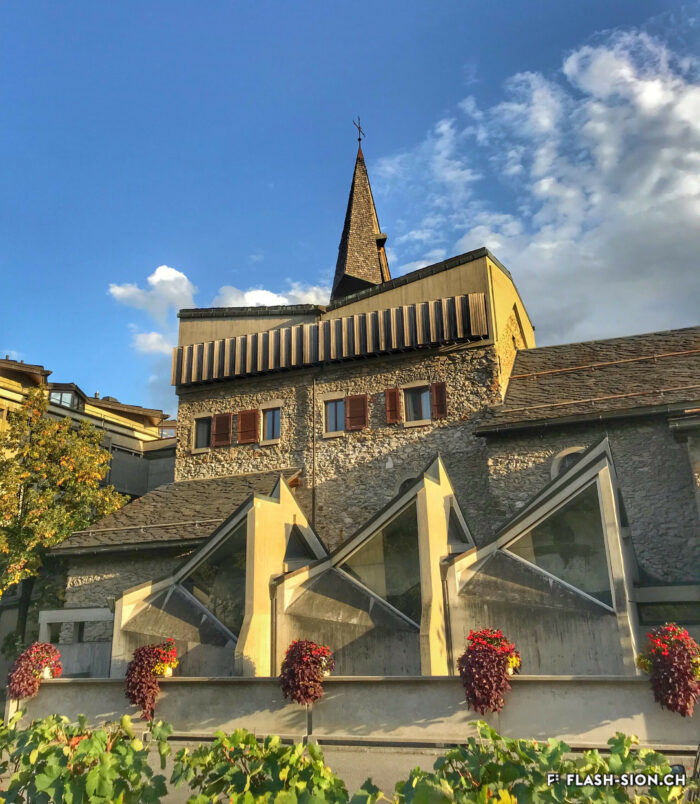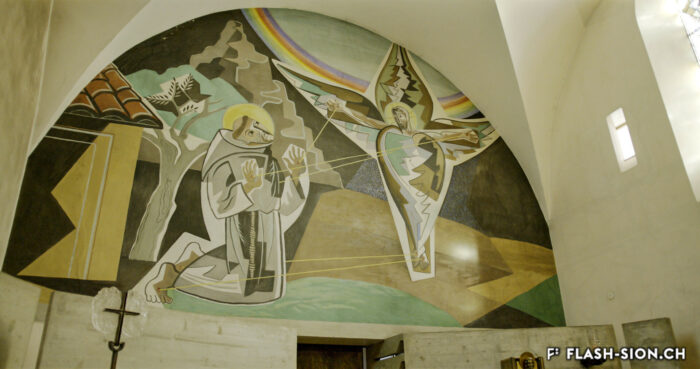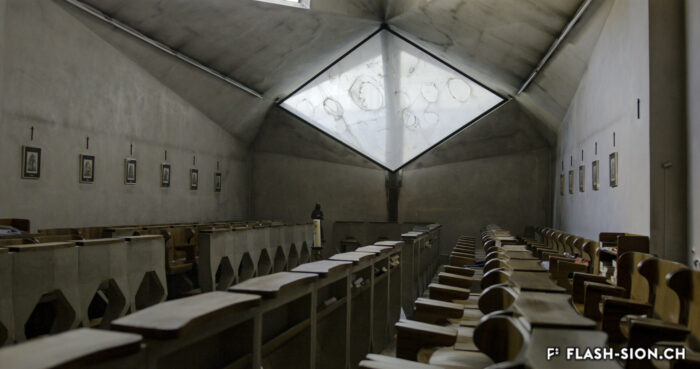Un monument d’importance (inter-)nationale
Le travail du Vénitien Mirco Ravanne ne passe pas inaperçu au couvent des Capucins. L’architecte est appelé au début des années 1960 par le père Damien qui le charge de transformer et d’agrandir l’édifice religieux. A l’avant-garde à l’époque, son intervention résolument moderne vient contraster avec les structures de la bâtisse du 17e siècle tout en les respectant. Ravanne ne néglige aucun détail que ce soit dans l’architecture ou dans le mobilier « made in Italy ». Aujourd’hui, le couvent, propriété de la Bourgeoisie, est considéré comme son œuvre architecturale majeure.
Ein Denkmal von (inter-)nationaler Bedeutung
Die Arbeit des Venezianers Mirco Ravanne sorgte für Aufruhr im Kapuzinerkloster von Sitten. Der Architekt wurde Anfang der 1960er Jahre vom Guardian Pater Damien mit der Umgestaltung und Erweiterung der Klosteranlage beauftragt. Sein avantgardistischer Eingriff steht auf den ersten Blick in starkem Kontrast mit der historischen Struktur der Anlage aus dem 17. Jahrhundert, vermag aber bei genauerem Hinschauen eindrücklich zwischen Alt und Neu zu vermitteln. Ravannes Liebe zum Detail offenbart sich sowohl in seiner Architektur als auch in der von ihm entworfenen Ausstattung “Made in Italy”. Heute gilt das im Besitz der Burgergemeinde befindliche Kapuzinerkloster als das bedeutendste Werk des Architekten.
A monument of national and international importance
Visitors to the Capuchin Monastery are bound to admire the work of the Venetian architect Mirco Ravanne. In the early 1960s, Father Damien commissioned him to transform and extend this religious building. The architect took a decidedly modern, avant-garde approach to his work, which contrasts with the 17th-century structures of the building but also shows respect for them. Ravanne paid full attention to every detail, both in the architecture and the “made in Italy” furnishings. The monastery, which now belongs to the Bourgeoisie (municipality), is regarded as his architectural masterpiece.
Un monumento d’importanza (inter-)nazionale
L’operato del Veneziano Mirco Ravanne non passa di certo inosservato al convento dei Cappuccini. L’architetto è chiamato all’inizio degli anni 60 dal padre Damien che gli affida il compito di trasformare e ampliare l’edificio religioso. All’epoca all’avanguardia, il suo intervento decisamente moderno contrasta con le strutture dell’edificio del 17° secolo pur rispettandole. Ravanne non trascura alcun dettaglio sia nell’architettura che nel mobilio “made in Italy”. Ad oggi, il convento, proprietà della Borghesia, è considerato come la sua operata architettonica maggiore.
